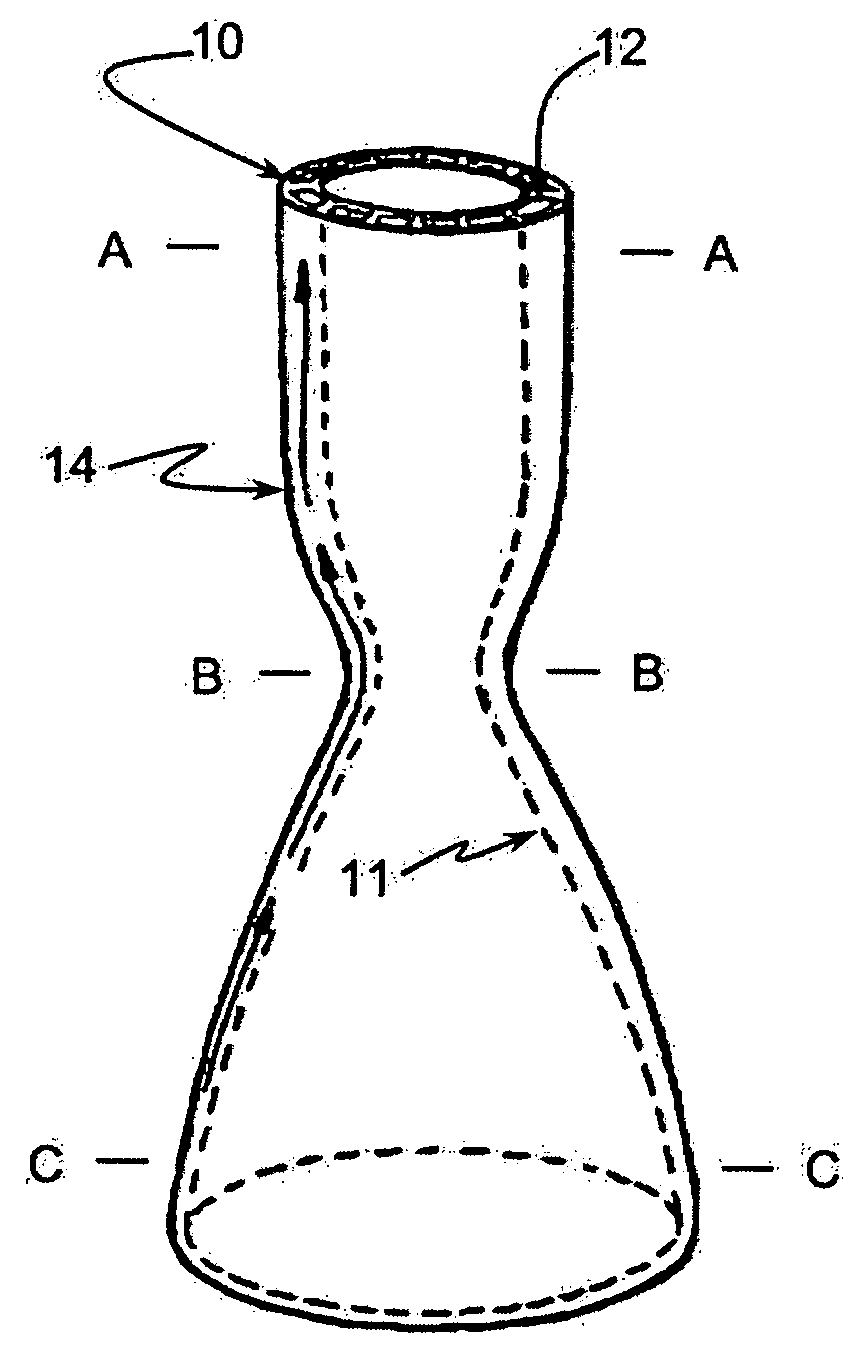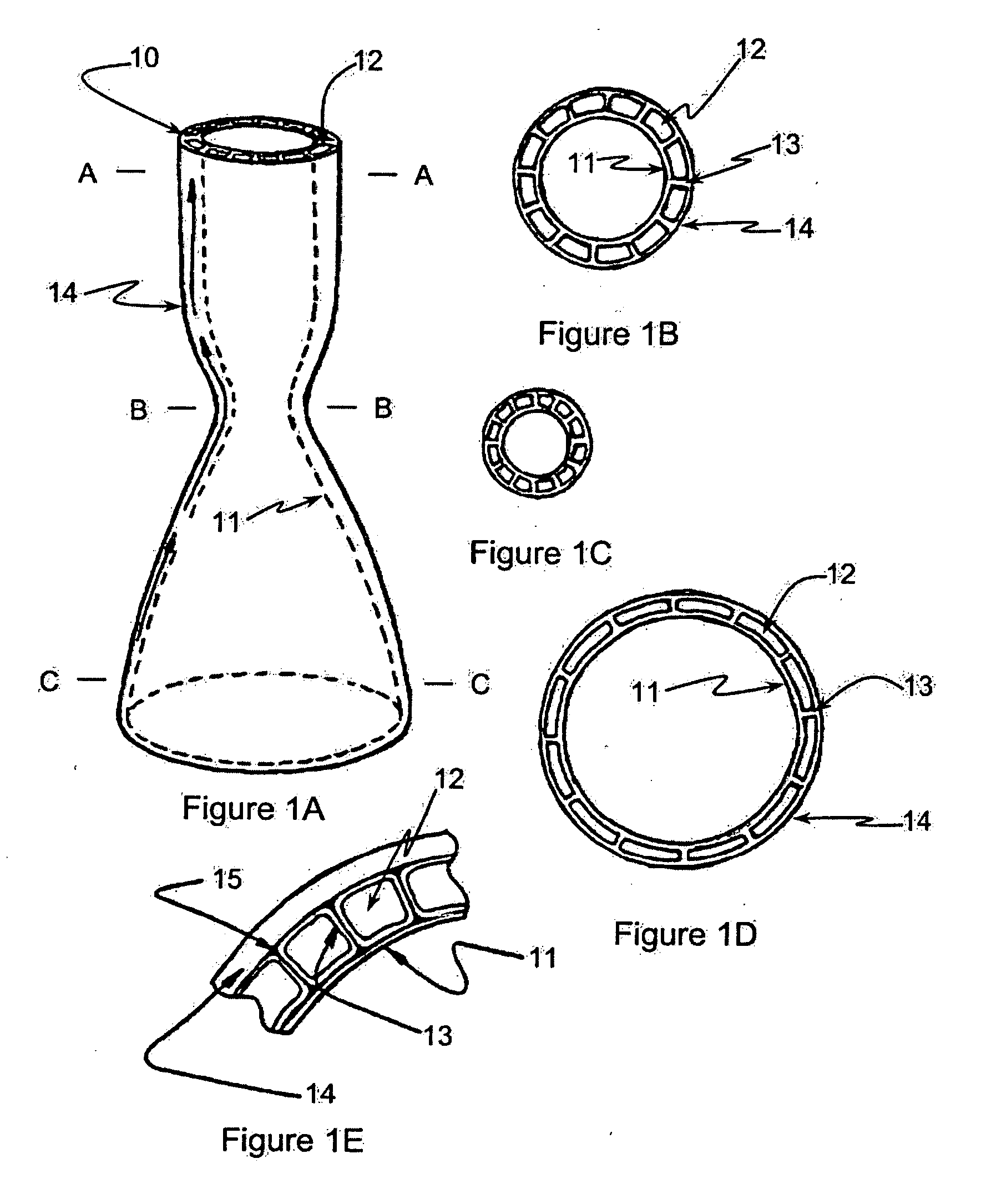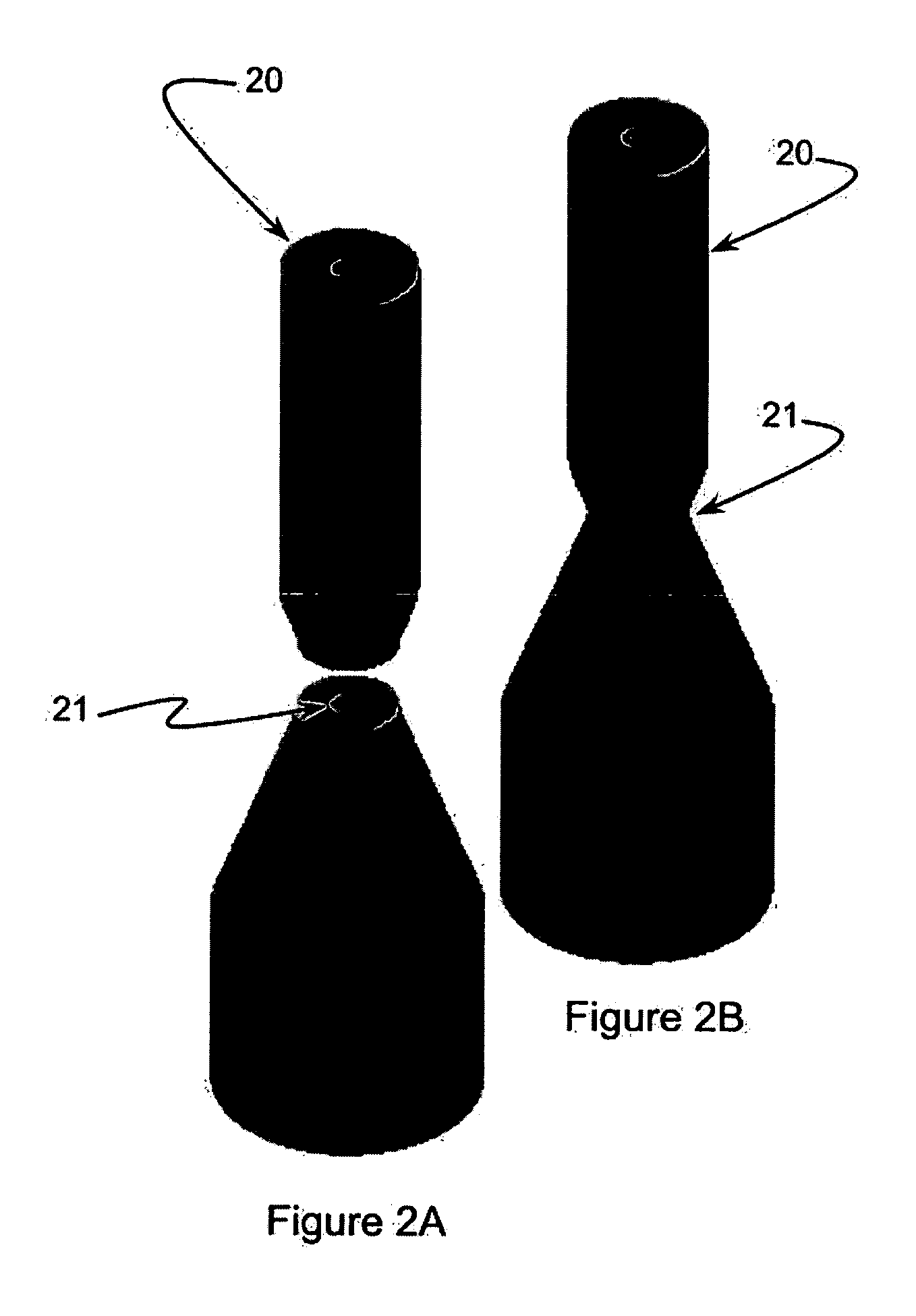Actively-cooled fiber-reinforced ceramic matrix composite rocket propulsion thrust chamber and method of producing the same
a fiber-reinforced ceramic and composite technology, applied in the direction of manufacturing tools, machines/engines, lighting and heating apparatus, etc., can solve the problems of affecting the satisfactory operation of the rocket propulsion system or the flight vehicle being propelled, and the performance of advanced chemical rocket technology is limited
- Summary
- Abstract
- Description
- Claims
- Application Information
AI Technical Summary
Problems solved by technology
Method used
Image
Examples
Embodiment Construction
[0071] The present invention will now be described with reference to a specific example comprising the fabrication of an actively-cooled fiber-reinforced ceramic matrix composite thrust chamber of converging-diverging geometry using the methods previously described. For this example, a simple axially oriented cooling channel design is selected for purposes of demonstrating the manufacturing methods of the current invention. The example thrust chamber is produced with a 50.8 mm diameter cylindrical combustion chamber, a 25.4 mm throat, a 101.6 mm diameter conical exhaust (expansion) nozzle, and is 203.2 mm in overall length. The convergent and divergent sections are of simple conical geometry, both with a half angle of 20-degrees with respect to the longitudinal axis. The ceramic matrix composite structure is designed to safely sustain combustion chamber pressures and coolant delivery pressures of up to 7.5 Mpa and 11.2 Mpa, respectively. The axial heat exchanger circuit is designed ...
PUM
| Property | Measurement | Unit |
|---|---|---|
| Thickness | aaaaa | aaaaa |
| Pressure | aaaaa | aaaaa |
| Temperature | aaaaa | aaaaa |
Abstract
Description
Claims
Application Information
 Login to View More
Login to View More - R&D
- Intellectual Property
- Life Sciences
- Materials
- Tech Scout
- Unparalleled Data Quality
- Higher Quality Content
- 60% Fewer Hallucinations
Browse by: Latest US Patents, China's latest patents, Technical Efficacy Thesaurus, Application Domain, Technology Topic, Popular Technical Reports.
© 2025 PatSnap. All rights reserved.Legal|Privacy policy|Modern Slavery Act Transparency Statement|Sitemap|About US| Contact US: help@patsnap.com



